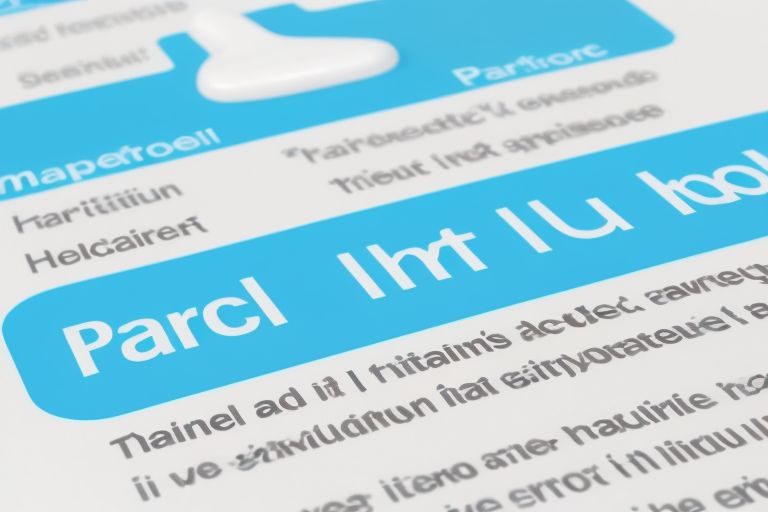Can You Take Paracetamol with Antibiotics Everything You Need to Know

Can you take paracetamol with antibiotics? This is a common question many people ask when they are prescribed antibiotics to treat an infection. Paracetamol, also known as acetaminophen, is a popular pain reliever used to reduce fever and relieve pain. Antibiotics, on the other hand, are prescribed to treat infections caused by bacteria. While both are commonly used for different health reasons, it’s important to understand how they interact and if they can be safely used together.
The good news is that, for most people, it’s safe to take paracetamol with antibiotics. Paracetamol doesn’t usually cause problems when combined with most antibiotics. However, just like with any medication, it’s essential to follow the correct dosage and consult with your doctor or pharmacist if you have any concerns. In some cases, certain antibiotics might have interactions that could cause side effects. For example, if you’re taking antibiotics that affect your liver, it’s important to avoid taking too much paracetamol as it can also be hard on the liver. Always read the medicine labels carefully and ask your healthcare provider if you’re unsure.
Can You Take Paracetamol with Antibiotics The Basics Explained
When you’re taking antibiotics to treat an infection, you may wonder if it’s safe to also take paracetamol for pain relief or fever. In most cases, the answer is yes, you can take paracetamol with antibiotics. Paracetamol is a painkiller that doesn’t affect how antibiotics work. It’s commonly used to reduce pain and lower fever. However, it’s essential to follow the dosage instructions and not exceed the recommended amount. Always check with your healthcare provider, especially if you are on multiple medications. They can advise you on any possible interactions or safety concerns related to your specific antibiotic.
How Safe Is It to Use Paracetamol and Antibiotics Together

Generally, it is safe to use paracetamol alongside antibiotics, but it’s important to use caution. Paracetamol works by blocking pain signals in the brain and does not interfere with antibiotics directly. Most antibiotics do not have harmful interactions with paracetamol. However, antibiotics that affect your liver might increase the risk of liver damage when taken with paracetamol, especially in high doses. It’s essential to take the correct dosage of both medications and avoid alcohol while taking either, as alcohol can also affect liver function. If you are unsure or feel concerned, it’s best to check with a healthcare professional before using these medications together.
Are There Any Risks of Taking Paracetamol with Antibiotics
Taking paracetamol with antibiotics is generally safe, but there are some risks you should be aware of. One main concern is the possibility of liver damage. Some antibiotics, like isoniazid (used for tuberculosis), can increase the strain on your liver when combined with paracetamol. Paracetamol, in high doses, can also be harmful to the liver. To avoid any potential risks, it’s crucial to stick to the recommended doses of both the antibiotic and paracetamol. If you experience symptoms like unusual fatigue, yellowing of the skin, or dark urine, you should seek medical help immediately.
Which Antibiotics Should You Avoid Mixing with Paracetamol
While most antibiotics are safe to take with paracetamol, some may require caution due to their impact on the liver. Antibiotics like isoniazid, which is used to treat tuberculosis, should not be taken with paracetamol unless approved by a doctor. Rifampicin, another antibiotic used for tuberculosis, can also increase the risk of liver damage when taken with paracetamol. If you’re prescribed any of these medications, it’s important to consult your doctor before combining them with paracetamol. Your healthcare provider may suggest alternative pain relief options or adjust the doses to ensure your safety during treatment.
When Should You Consult a Doctor About Taking Paracetamol with Antibiotics
If you’re unsure about whether it’s safe to take paracetamol with your antibiotics, it’s always best to consult a doctor. You should seek medical advice if you have any underlying liver conditions or if you’re taking multiple medications. Additionally, if you are pregnant or breastfeeding, it’s a good idea to check with a healthcare provider before combining paracetamol and antibiotics. If you experience side effects like stomach pain, yellowing of the skin, or dark urine while taking these medications together, it’s crucial to contact your doctor immediately to avoid serious health risks.
What to Do If Paracetamol Doesn’t Relieve Pain While on Antibiotics
If you find that paracetamol isn’t effectively relieving your pain while you’re on antibiotics, you may need to explore other pain relief options. It’s important to consult your healthcare provider if paracetamol is not enough to manage your pain. Your doctor may recommend stronger painkillers or suggest other treatments to complement the antibiotics. In some cases, if your pain is persistent and not related to your infection, further investigation may be needed. Never increase your dose of paracetamol or combine it with other painkillers without first consulting your doctor, as this could lead to serious health issues.
Understanding How Paracetamol and Antibiotics Affect Your Liver
Paracetamol and certain antibiotics can affect your liver, especially if you take them in large amounts or for extended periods. Paracetamol is metabolized by the liver, and overuse can lead to liver damage. Antibiotics like isoniazid and rifampicin can also impact liver function, and using them alongside paracetamol can increase the risk of liver damage. To keep your liver healthy, avoid drinking alcohol while taking these medications, and always stick to the recommended doses. If you notice any symptoms of liver issues, such as fatigue, jaundice, or dark urine, seek medical attention immediately.
The Importance of Dosage: How Much Paracetamol Can You Take with Antibiotics

When taking paracetamol with antibiotics, it’s crucial to follow the correct dosage to avoid any harmful effects. For adults, the typical dose of paracetamol is 500 mg every 4 to 6 hours, but you should never exceed 4 grams (4000 mg) in a 24-hour period. Taking too much paracetamol can overwhelm your liver, especially when combined with antibiotics that also affect liver function. Always read the medication labels and stick to the prescribed dosage. If you’re unsure about how much paracetamol you can take, ask your doctor or pharmacist for advice to ensure you’re using both medications safely.
Paracetamol with Antibiotics: What You Need to Know During Pregnancy and Breastfeeding
If you are pregnant or breastfeeding, you may wonder if it’s safe to take paracetamol with antibiotics. Paracetamol is generally considered safe during pregnancy when used in recommended doses, but it’s important to consult your doctor before taking it with antibiotics. Some antibiotics may not be safe during pregnancy or breastfeeding, so your healthcare provider can help determine the best treatment for you. Always follow your doctor’s guidance on the proper dosage and duration of both antibiotics and paracetamol during pregnancy or while breastfeeding to ensure both your health and the health of your baby.
Can You Take Paracetamol with Antibiotics for Children What Parents Need to Know
Parents often worry about whether it’s safe to give children paracetamol while they are on antibiotics. In most cases, yes, it is safe to give children paracetamol for pain or fever relief when they are taking antibiotics. However, it’s essential to use the correct dose based on the child’s age and weight. Some antibiotics, like those used to treat tuberculosis, may require special caution when combined with paracetamol. Always consult your child’s doctor before giving them any medication, especially if they are on antibiotics, to ensure safety and avoid any potential drug interactions.
Conclusion
In conclusion, it is generally safe to take paracetamol with antibiotics for most people. Paracetamol helps relieve pain and fever, while antibiotics work to fight infections. However, it’s always important to follow the recommended doses for both medications. If you are ever unsure or have concerns, don’t hesitate to talk to your doctor or pharmacist to ensure your safety. They can provide helpful advice and answer any questions you may have.
Remember that not all antibiotics work the same way, and some might have special instructions when combined with paracetamol. If you notice any unusual side effects or if your pain doesn’t go away, reach out to your healthcare provider for further guidance. By using medications correctly, you can stay safe while feeling better sooner.
FAQs
Q: Can I take paracetamol with antibiotics?
A: Yes, you can usually take paracetamol with antibiotics. Just make sure to follow the correct dosages for both.
Q: Are there any antibiotics I shouldn’t mix with paracetamol?
A: Yes, antibiotics like isoniazid and rifampicin should be avoided with paracetamol, as they can increase the risk of liver damage.
Q: How much paracetamol can I safely take with antibiotics?
A: You should not take more than 4 grams (4000 mg) of paracetamol in 24 hours, even when taking antibiotics.
Q: Can children take paracetamol with antibiotics?
A: Yes, children can take paracetamol with antibiotics, but make sure to follow the proper dosage based on their age and weight.
Q: Do I need to consult my doctor before taking paracetamol with antibiotics?
A: If you are unsure or have concerns, it’s always best to talk to your doctor or pharmacist before taking paracetamol with antibiotics.




